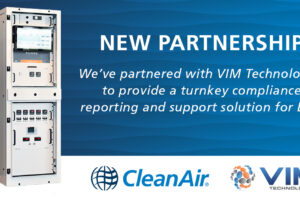On November 8, 2018, US EPA issued final amendments to the Refinery Sector Rule. These final amendments are based on EPA’s April 10, 2018 proposal. As of November 19, this final rule has not been published in the Federal Register, so this analysis is based on the pre-publication copy of the rule. The amendments covered many topics but this summary will only address impacts to the portions of the rule dealing with flares.
For the red-line/strikeout rule language in this blog post, I relied on a document detailing the full rule recently provided by AFPM. That document was prepared by my other good friends at Barr Engineering. My appreciation to both parties for their excellent work. The notes that accompany many of the sections below are mine.
The green underlined text indicates text added to the current regulatory language.
The red strikethrough text indicates deletions from the current regulatory language.
I’m feeling the holiday spirit early this year… The flare-related amendment changes are helpful for flare operators. They provide more clarity and, in some places, needed flexibility to meet the RSR flare requirements.
Definition Changes [63.641]
Flare purge gasmeans gas introduced between a flare header’s water seal and the flare tip to prevent oxygen infiltration (backflow) into the flare tip. or for other safety reasons. For a flare with no water seal, the function of flare purge gas is performed by flare sweep gas and, therefore, by definition, such a flare has no flare purge gas.
Flare supplemental gas means all gas introduced to the flare in order to improve the combustible characteristics heat content of combustion zone gas. Flare supplemental gas does not include assist air or assist steam.
My Note: Hydrogen can be added to flare vent gas to reduce the propensity of the flare to smoke. Does this mean that hydrogen used in this way is not supplemental gas if NHVcz is above 294 Btu/scf? If it’s not, what is it?
Perimeter Assist Air Added to Upper/Lower Steam [63.670(f)]
(f) Dilution operating limits for flares with perimeter assist air. Except as provided in paragraph (f)(1) of this section, for each flare actively receiving perimeter assist air, the owner or operator shall operate the flare to maintain the net heating value dilution parameter (NHVdil) at or above 22 British thermal units per square foot (Btu/ft2) determined on a 15-minute block period basis when regulated material is being routed to the flare for at least 15-minutes. The owner or operator shall monitor and calculate NHVdil as specified in paragraph (n) of this section.
(1) If the only assist air provided to a specific flare is perimeter assist air intentionally entrained in lower and/or upper steam at the flare tip and the effective diameter is 9 inches or greater, the owner or operator shall comply only with the NHVcz operating limit in paragraph (e) of this section for that flare.
My Note: See also my blog post, Btu per SQUARE FOOT? What the heck is EPA’s Flare Dilution Factor?, on the derivation of the EPA Dilution Factor.
Visible Emissions Monitoring [63.670(h)]
(h) Visible emissions monitoring. The owner or operator shall monitor visible emissions while regulated materials are vented to the flare. conduct an initial visible emissions demonstration must be conducted using an observation period of 2 hours using Method 22 at 40 CFR part 60, appendix A-7. The initial visible emissions demonstration should be conducted the first time regulated materials are routed to the flare. Subsequent visible emissions observations must be conducted using either the methods in paragraph (h)(1) of this section or, alternatively, the methods in paragraph (h)(2) of this section. The owner or operator must record and report any instances where visible emissions are observed for more than 5 minutes during any 2 consecutive hours as specified in §63.655(g)(11)(ii).
(1) At least once per day for each day regulated material is routed to the flare, conduct visible emissions observations using an observation period of 5 minutes using Method 22 at 40 CFR part 60, appendix A-7. If at any time the owner or operator sees visible emissions while regulated material is routed to the flare, even if the minimum required daily visible emission monitoring has already been performed, the owner or operator shall immediately begin an observation period of 5 minutes using Method 22 at 40 CFR part 60, appendix A-7. If visible emissions are observed for more than one continuous minute during any 5-minute observation period, the observation period using Method 22 at 40 CFR part 60, appendix A-7 must be extended to 2 hours or until 5-minutes of visible emissions are observed. Daily 5-minute Method 22 observations are not required to be conducted for days the flare does not receive any regulated material.
My Note: On November 14, 2018, EPA amended Method 22 allowing digital photography to be used for some of the recordkeeping requirements of the method (sky background, sun position, etc).
Measuring Perimeter Assist Air [63.670(i)]
(5) Continuously monitoring fan speed or power and using fan curves is an acceptable method for continuously monitoring assist air flow rates.
(6) For perimeter assist air intentionally entrained in lower and/or upper steam, the monitored steam flow rate and the maximum design air-to-steam volumetric flow ratio of the entrainment system may be used to determine the assist air flow rate.
My Note: Paragraph 6 is a welcome change since there is no straightforward way to measure air entrained in steam. I’ll be very curious to see how this affects the NHVcz of these types of flares since, previously, this entrained air was not accounted for in the NHVcz calculation used prior to RSR.
Standard Flow for Exit Velocity [63.670(k)(3)]
In the RSR, the flare exit velocity calculation (Vtip) used actual cubic feet for volumetric flow. This was a change from previous calculations using standard cubic feet and would have resulted in many flares reporting higher flows based solely on this calculation artifact. This has been corrected back to standard cubic feet.
Supplemental Gas Description
In several locations in the amendments, the description of supplemental gas has changed in equation term descriptions. Below is one instance. All other instances where the change is made are consistent with this.
NHVNG = Net heating value of flare supplemental natural gas to the flare for the 15-minute block period determined according to the requirements in paragraph (j)(5) of this section, Btu/scf.







